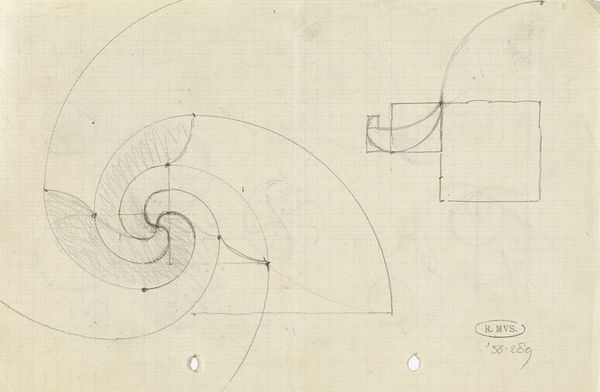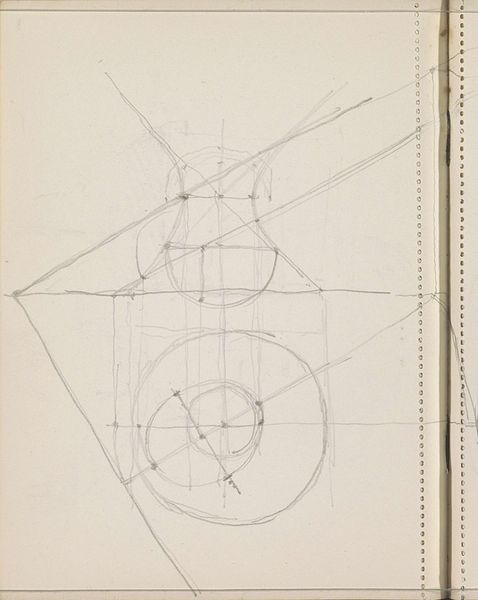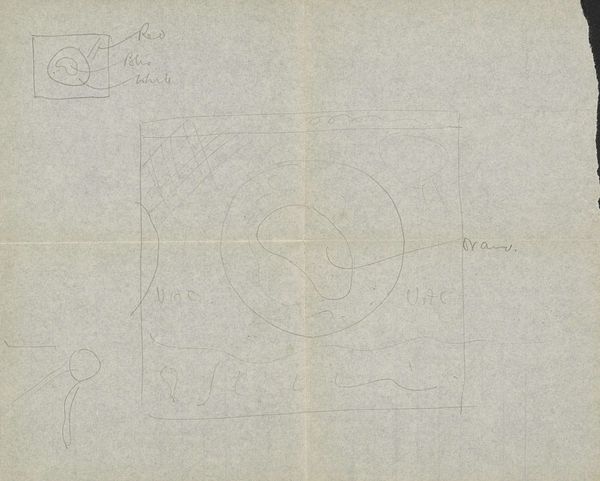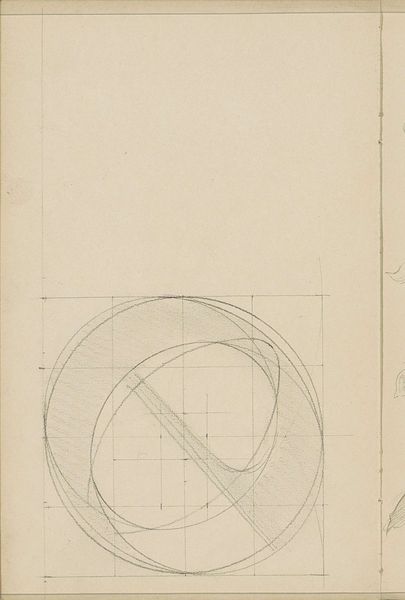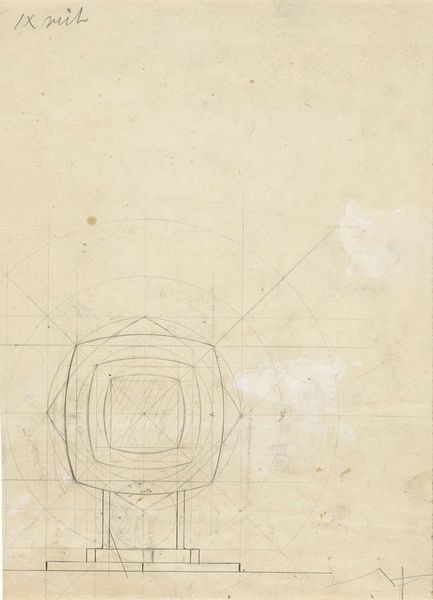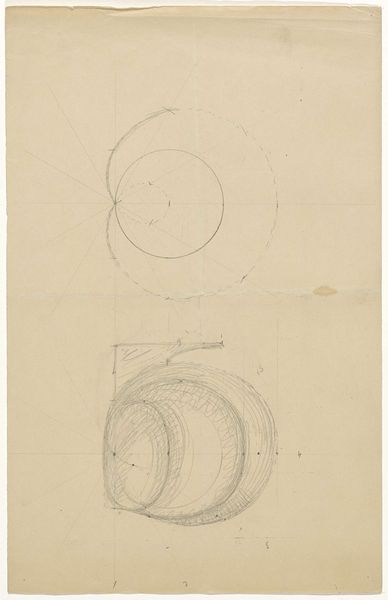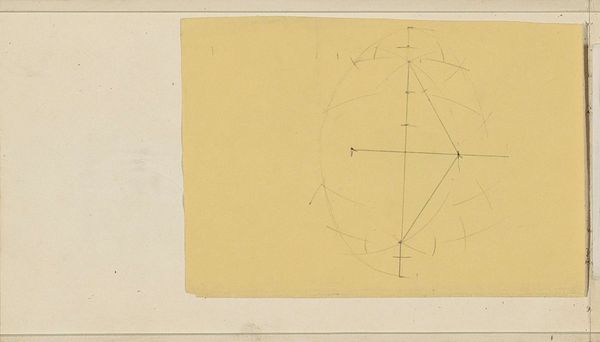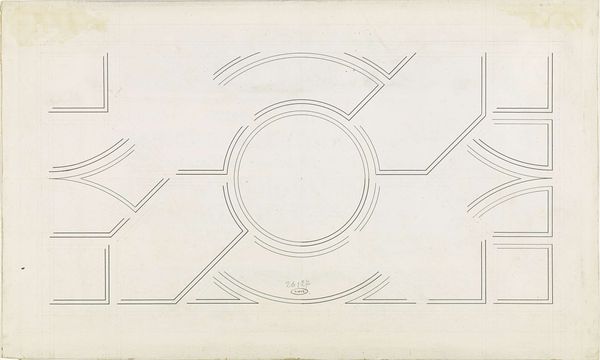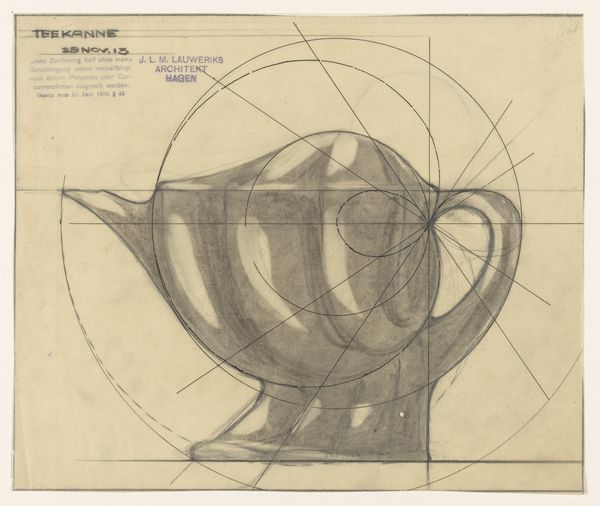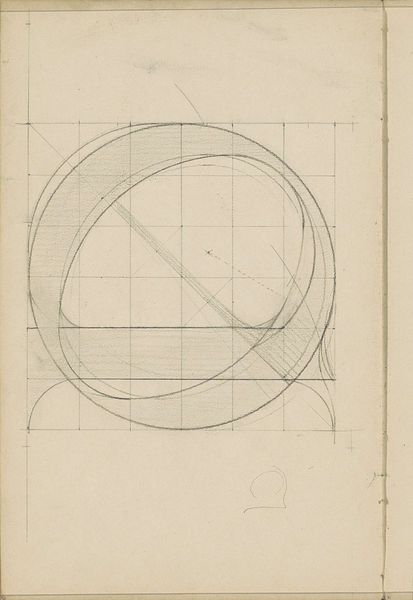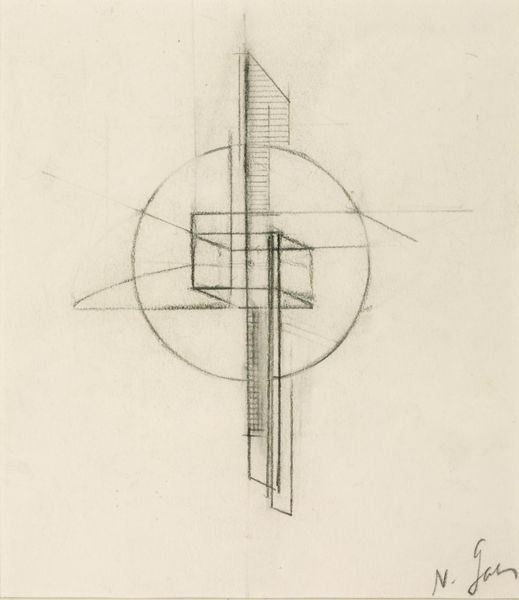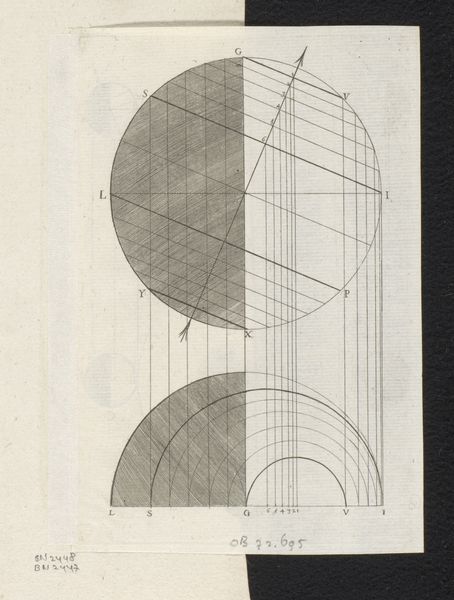
drawing, pencil
#
drawing
#
light pencil work
#
art-nouveau
#
etching
#
form
#
geometric
#
pencil
#
abstraction
#
line
Dimensions: height 456 mm, width 591 mm
Copyright: Rijks Museum: Open Domain
Curator: At first glance, this pencil drawing appears quite technical, almost like a blueprint. It’s precise but delicate. Editor: Indeed. What we have here is "Ontwerp voor een zilveren fruitschaal," or "Design for a Silver Fruit Bowl" attributed to Mathieu Lauweriks and created sometime between 1874 and 1932. It's a fascinating example of Art Nouveau intersecting with geometric abstraction. Curator: Abstraction feels like the right word. I see a spiral pattern built upon squares, very precisely rendered on what appears to be graph paper. The interplay of line, form and geometric precision, must have dictated every step of the fruits bowl construction process. It feels as though Lauweriks is trying to merge hand-crafted design with the growing industrial aesthetic of the time. Editor: Exactly. Consider the period. Lauweriks was working at a time when industrial production was rapidly transforming society. Artists and designers were grappling with questions of how to reconcile craftsmanship with mass production. His work demonstrates an ambition to imbue even functional objects, such as a fruit bowl, with higher mathematical principles and artistry. Curator: I’m intrigued by the use of silver, or at least, the plan to use it. Silver carries such historical weight. Beyond being an ornamental material with links to the decorative arts, using a valuable material adds another layer to the socio-economics implications and value of making. Was this intended for an elite clientele or was it meant to be a more accessible piece? Editor: That’s a key point. Silver, of course, signified luxury and refinement, placing this theoretical fruit bowl within a specific socio-economic context, likely aimed toward the emerging bourgeoisie who sought to elevate their status through decorative objects. The politics of consumption and the accessibility of beauty was clearly at stake for those early practitioners of modernism. Curator: I agree, and the careful labor reflected in each meticulous pencil stroke highlights a commitment to craftsmanship, in spite of this movement towards industrialization. Each deliberate geometric line conveys a clear vision from design to final form. Editor: Precisely. The drawing provides a window into how ideals around beauty and functionality were actively being negotiated within the context of the economic landscape of his time. It reveals this tension between hand-craftsmanship and mechanical production as the artist bridged high design with common form. Curator: Seeing that intersection of the geometric and luxurious is truly fascinating and makes me consider how such everyday things take on such a profound cultural significance. Editor: Indeed. And reflecting on the design of a silver fruit bowl through a historical context challenges our conventional separation of aesthetics, economy and society.
Comments
No comments
Be the first to comment and join the conversation on the ultimate creative platform.
